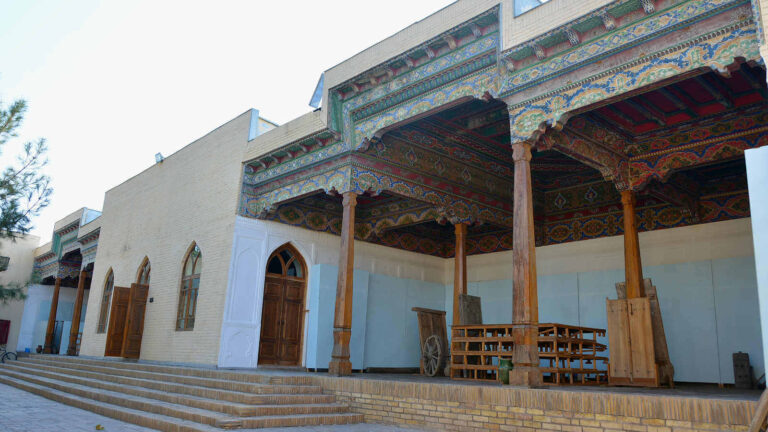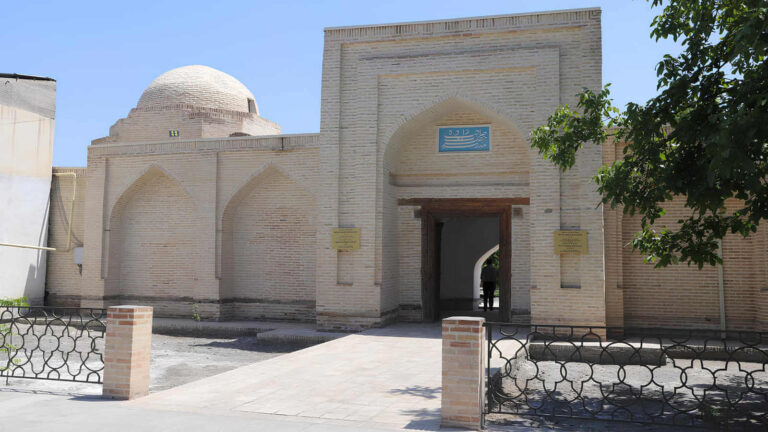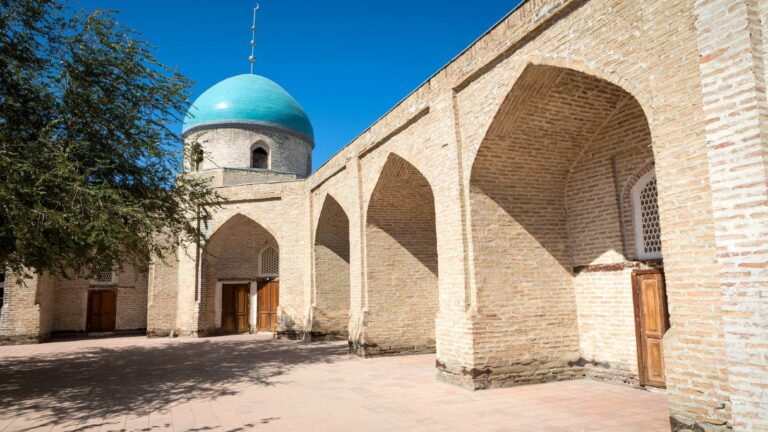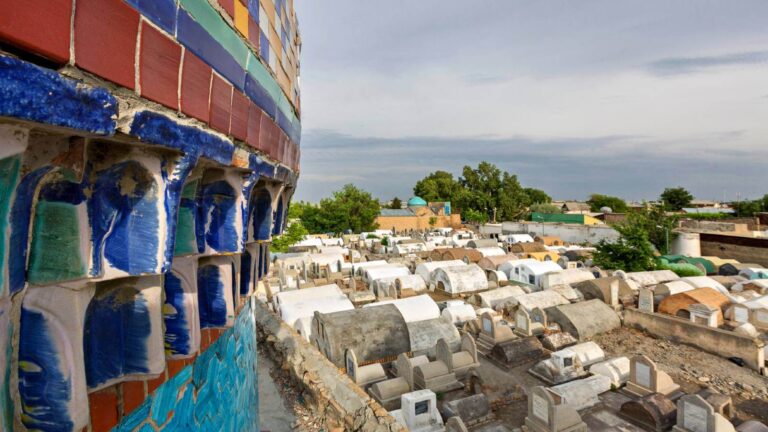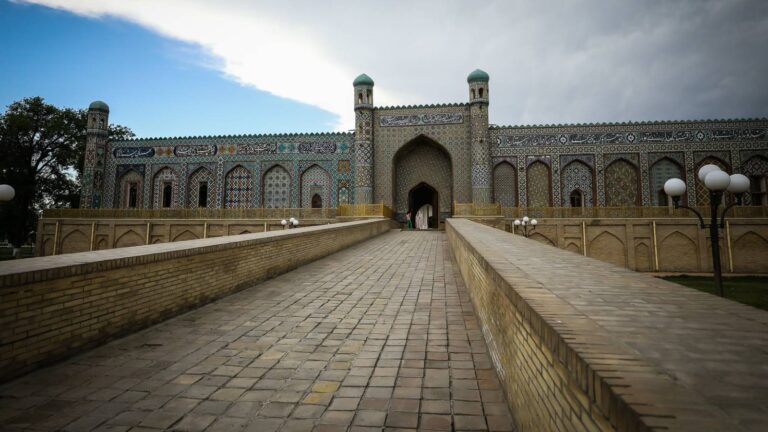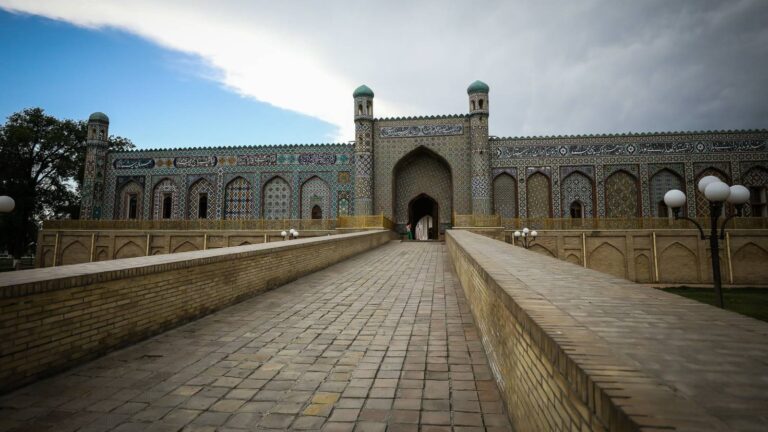Getting There
Jami Mosque is located in Kokand city on Khamza Street.
It is convenient to get here by buses No. 14, 33, 66.
One can get by train from the South Station in Tashkent in Tashkent-Andijan-Tashkent direction. The flight is carried out every day 2 times.
It is also convenient to move around the city by taxi, using services of the Taxi Premier, Arava, Real taxi, etc.
What to Expect
In 1852, during Khudoyarkhan reign, a minaret of burnt bricks with a height of almost twenty two meters was built next to the Jami mosque. It has a frustaconical shape with a hexagonal lantern at the top. Inside the trunk there is a spiral staircase, along which the azanchi climbed five times a day to call the faithful to prayer.
Five years after the construction of the minaret, Khudoyarkhan invited the best masters and artists to restore the cathedral mosque. For this purpose, he ordered to use the two-year income from the waqf – the lands intended for the maintenance of the mosque and madrasah.
History
Legend has it that before laying the first brick of the mosque, Umarkhan summoned everyone and asked: “Which of the people present here can confidently declare that he has not committed a single sin in his life, has not missed a single prayer?” According to tradition, a righteous and pious person should have laid the first stone in the future mosque. Khan asked everyone several times, but no one dared to take on such responsibility. Then Umarkhan decisively moved towards the mosque and laid the first brick with his own hands, and the inhabitants of the city gave him the nickname “Zhannat makon”, which means “worthy of paradise”. The fame of the beauty of this mosque spread throughout the Kokand Khanate and went far beyond its borders.
Facilities Available
The main cathedral mosque of Kokand is a khanaka – a winter room surrounded on three sides by an ayvan. The vault of the aivan is supported by ninety-eight columns and a solid variety of elm, which is called the “stone tree”. Ten of the same columns are located inside the khanaka. All of them are beautifully carved, crowned with stalactite capitals and set on marble bases.
The main facade of the mosque, which is about a hundred meters long, faces the east, highlighted by a colonnade and decorated with a decorative cornice, raised above the central entrance, forming the so-called kayvan. In contrast to the simple brickwork of the outer walls, the main facade and interior of the mosque are richly decorated.
The plafonds and ceiling beams, made in the vassa dzhuft style characteristic of the Ferghana Valley, are painted with geometric and floral patterns. The walls are decorated with rectangular and lancet panels made of carved gakyil, the panels are decorated with ornaments in the traditional Kokand technique “chaspak” – a kind of mosaic made of colored ganch.
On the territory of the palace there is a public toilet, tourist information. The palace is located in the city center, which gives convenient access to accommodation facilities, shopping and other tourist services.

